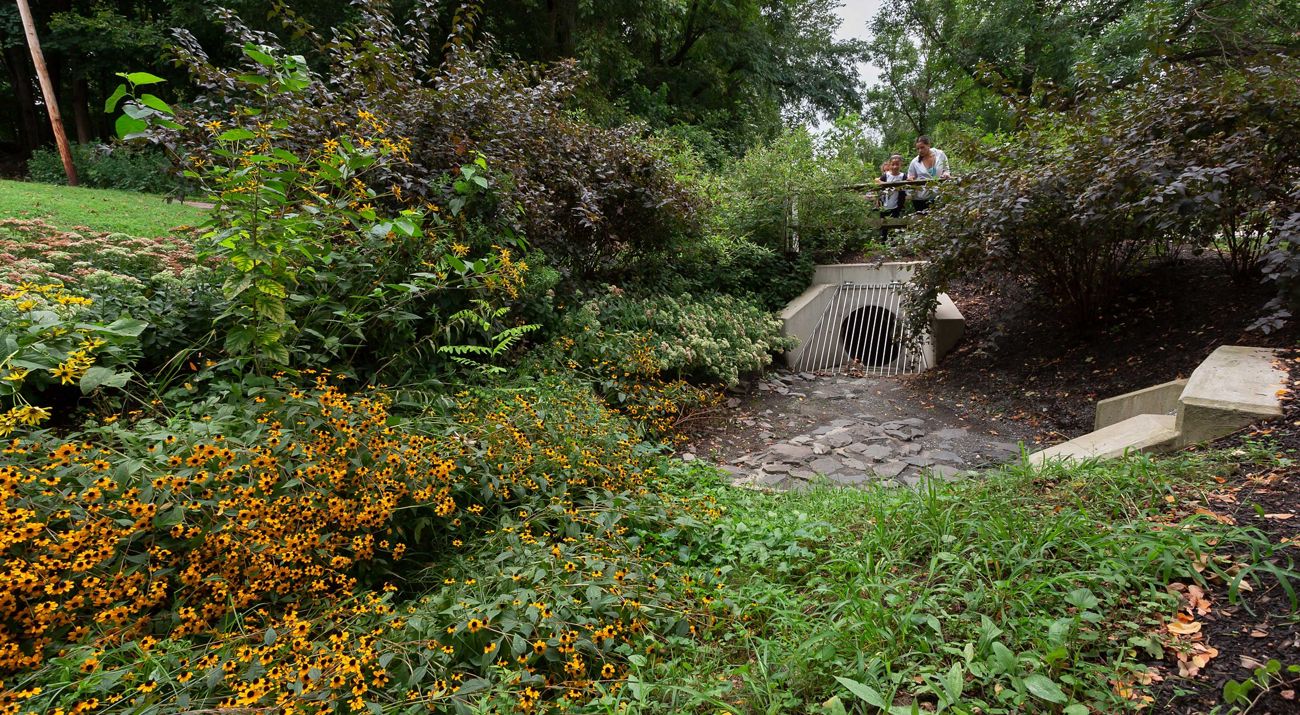
Soaking Up Stormwater
Hear from scientists and community partners working to manage the threats of stormwater in the third episode of the Destination Nature podcast.
Destination Nature: Soaking Up Stormwater
Click the green arrow below to hear episode three of Destination Nature.
Stacy Raine [SR]: When a storm rolls in and the rain hits the ground, where does all that water go? In a forest or on a prairie, it sinks into the ground earth and eventually makes its way into our rivers, streams, and oceans. But it’s a different story when rain falls in our cities. in cities, the path is much different.
Julie Ulrich [JU]: So, think about oil from your cars, think about feces from animals from pets being walked. Think about anything that you might see on a city street when that rainfall happens in cities, all of that is being rushed into sewer systems and often that ends up getting pushed out into our rivers and streams.
We know that when you have one gallon of polluted water that mixes with one gallon of clean water, well that equals two gallons of polluted water. So, it’s a very serious issue and one that we need to figure out solutions to address
SR: This is Destination Nature, a podcast by The Nature Conservancy that takes you into the field to hear the stories behind conservation projects from all around the globe. I’m Stacy Raine.
Cities everywhere are facing a big, expensive problem.
The stormwater that washes over the roofs, streets, sidewalks, and parking lots that make up our cities picks up contaminants, like chemicals and debris, and eventually, can wreak havoc on our waterways.
But there’s more to this story for some cities, especially older ones. Some cities use the same pipes and tunnels to manage stormwater and wastewater. It's called a Combined Sewer System.
As more people move to cities - by 2050, two out of every three people on Earth will live in a city - more pressure is placed on the sewer systems. And when it rains, it’s sometimes more than these systems can handle.
JU: Whatever’s coming from your toilets, your showers, your washing machines. That’s mixing with all of the excessive rainfall in a city landscape. And when there’s too much of that water in a storm system, it overflows, and it overflows directly into the rivers that we love. The creeks and the streams that we love.
SR: Julie Ulrich lives and works in Philadelphia, where she directs The Nature Conservancy’s urban conservation efforts.
And Philadelphia’s Combined Sewer system can be overwhelmed with as little as a tenth of an inch of rain.
JU: When we have overflows that are happening to the tune of trillions, that’s trillion with a t, trillions of gallons every year are being dumped out into our waterways because of combined sewer overflows.
SR: And in Philadelphia, up to sixteen billion gallons of contaminated water ends up in the Delaware river watershed each year.
JU: This is such a problem on such a massive scale that the EPA has labeled stormwater as one of the fastest growing sources of water pollution in the country. That’s really significant.
SR: It’s so significant that the EPA is issuing massive fines, up to millions of dollars, for letting untreated stormwater overflow into our waterways and decimate those ecosystems.
Rob McDonald is an ecologist and one of TNC’s lead scientists. He researches how thoughtful urban planning can help us achieve a sustainable future and how cities impact the natural world.
Rob McDonald [RM]: Urban water pollution is one of the major causes of, um, imperilment and threat to freshwater biodiversity. One of the worst things that comes out of cities is sediment and erosion. So that fills in a lot of streams and that can be detrimental to wildlife just by itself. There’s also a huge problem of nutrient pollution. So excess nitrogen or phosphorous flows out of cities, just like it flows off of farmer’s fields. It leads to these big algal blooms. So urban water pollution it’s also particularly problematic cause it has other things like heavy metals, that are quite toxic.
SR: The residents of Philadelphia depend on these rivers and streams for their drinking water. They swim, and kayak, and fish in these waters.
It’s not only our waterways we have to worry about. Sometimes, when the wastewater systems are overloaded, the water back up into our streets.
That means when shopper head into a store, or kids walk to school—they may see what looks like muddy puddles on the ground. Sometimes, they unknowingly wade through or play in contaminated wastewater.
And even worse, that backed up water can flood peoples’ homes.
Danyell Brent [DB]: Our biggest problem is flooding. So, all that water backs up, which runs it all down to the drain down here. Now there’s only one drain down here, so it can only take so much water at a time.
SR: That’s Danyell Brent. He is a longtime resident of Philadelphia and lives in the Bellmont community.
DB: Our houses have been flooded about five or six times. When hurricane Irene came that flooded everything. We opened our front door and all that water, just rush straight to the back. And once that settled, it was about up here to my knee.
SR: They flood again and again, storm after storm.
DB: If that drain gets clogged up, everybody down there gets flooded. If it started raining then one, two in the morning, by three, four o’clock we flooded down there. I have to climb out my window because if you open the door, all the water is just gonna rush in. So, I had to come out my window with the plug and the pump come across there, start from back there, pumping it into the grass.
SR: To clean up our waterways and to safeguard our homes and our health, cities have to find better ways to manage stormwater.
Many cities have an elaborate network of tunnels to mange both rainfall and sewage—huge tunnels up to 20 feet across, snaking for miles underneath our cities. There’s a name for these tunnels, and the drains, pipes, and gutters that bring the water to them: gray infrastructure.
Then, cities may have a little of what’s called green infrastructure on top of that.
JU: Green stormwater infrastructure is tree trenches, rain gardens, bioswales, they are above ground vegetated systems that filter and manage storm water on site at the source of that rainwater runoff rather than taking that runoff, channeling it through piping systems and having it dump out at the outfall where the river is.
SR: Philadelphia has one hundred and sixty-five of those combined sewer outfalls that discharge wastewater right into the river. But by planting more vegetation inside our cities, like trees and shrubs, and adding more permeable surfaces to the city landscape, we can reduce the amount of dirty, toxic water that reaches our rivers and homes.
JU: We designed these systems back at a time period where we just didn’t anticipate this many people living in cities. And so, it’s now a time to rethink the next fifty, a hundred years of infrastructure. We designed great systems for the 19th and 20th century. But what will the 21st century water infrastructure look like?
SR: The Philadelphia Water Department and city leaders began to wonder, could nature play a larger role in the solution to more effectively manage stormwater? They worked with the Environmental Protection Agency and the Pennsylvania Department of Environmental Protection to consider the possibilities, and then in 2011, they announced an innovative new plan:
JU: Rather than a predominantly gray infrastructure approach with a little bit of green, they reversed that formula and said, what if we try a predominantly green approach with some smaller amount of gray added.
SR: The Green City Clean Waters plan is a bold strategy to go against the norm: to use mostly green versus mostly gray infrastructure on nearly ten thousand acres across Philadelphia. By adding more nature inside the city, like green roofs, pocket parks, native pollinator gardens, and other installations that can soak up stormwater, Philadelphia will see an eighty-five percent reduction in the amount of polluted water going into the waterways by the year 2036.
JU: You have an almost four hundred-year-old city that is heavily developed trying something that’s never been tried before and at the scale that they’re doing it. It’s so impressive.
SR: Just one greened acre can absorb over twenty-seven thousand gallons of water in a single year.
JU: We’ve been studying green stormwater infrastructure for decades now. Oftentimes these systems are overperforming and can actually manage even more stormwater than we designed for. There’s a lot to be said for the performance of green stormwater infrastructure.
SR: The Philadelphia Water Department set their sights on a big goal and are working with a range of partners to help them accomplish it, including TNC.
JU: We’re playing a really unique role of one-part designer and technical expertise and another part community engagement, policy and finance analysis. So, we’re playing a role of a think tank implementation partner.
SR: TNC is working with communities in neighborhoods across Philadelphia, clustering many Greened Acre projects over multiple city blocks. By adding green infrastructure block by block, the Conservancy is helping to demonstrate how working at a larger scale can magnify the other benefits that green infrastructure provides for both people and nature.
Cities might be a newer geography for TNC, but the work itself isn’t. One critical component to implementing the Green City Clean Waters plan is working with private landowners, something TNC has done for decades.
JU: We are helping to work with private land owner partners who want access to green stormwater infrastructure on their landscape to be able to provide technical support, to be able to provide design support getting these projects in the ground in a way that takes a lot of skillset, a lot of bandwidth and a lot of capacity that certain land owners don’t have.
SR: In Philadelphia, TNC is working with organizations that include a church, a grade school, and a group called Friends Rehabilitation Program, known as FRP. It’s a social service and affordable housing provider. Danyell works for FRP as a garden coordinator and outreach specialist.
DB: Today we gave out cucumbers, pears, tomatoes and hot peppers.
My job consists of a lot of gardening work, but that’s only a very small percentage of what I do. The favorite thing about this job is the people. I bring people together.
SR: FRP asked TNC to partner on greening some of their properties, and Danyell makes sure the community is involved:
DB: I’m having a volunteer day. I wanted to know, could you come out? It’s going to start from one to three. Right here in the community.
I’m trying to bring some of my brothers and sisters from the community on to help us tomorrow.
SR: Organizations like FRP see the long-term value in these stormwater projects, not just for reducing flooding, but for the other benefits nature provides as well.
Nature is something that everyone in these communities can rally around. The new greenspaces provide food and places to gather, and the beauty nature adds helps build a sense of pride. And importantly, it helps residents stay healthy.
RM: The scientific evidence is becoming more and more clear that having nature nearby, um, helps keep us healthy and that it’s not just a nice thing to have, but that it’s essential for, for healthy urban living.
SR: Trees provide shade from the heat and can significantly cool a city, reducing heat-related deaths and illnesses. They even help manage one of the most damaging types of air pollution by reducing particulate matter in the air.
RM: It all adds up to a real benefit. The evidence is getting stronger and stronger that nature and mental health are, are linked. Nature is a break from the stress of the urban world we live in.
SR: In Philadelphia, like in a lot of cities, there are some places where nature is largely absent. TNC decided to start in these areas, and through conversations with the residents there, it became clear that nature could play a large role in solving many problems these communities are facing.
JU: There were needs that we had seen, but that community residents and landowner partners were bringing up.
Lack of green space and too much heat is a critical issue. Lack of food production is a critical issue. When you hear that in a community, one of their top three biggest issues is flooding and it’s right up there with jobs and it’s right up there with crime. You start to see, well actually nature can play a role, and this makes sense for us to be working where we can and where we’re invited into spaces to be able to lend our knowledge and resources.
SR: Once there was agreement that nature could help, the next question to answer was how and where to incorporate it.
JU: We’ve had a number of workshops, planning sessions with our landowner partners and residents of the neighborhoods. It’s a mixture of shared visioning, looking at potential design plans and design solutions and co-creating a vision of what we want to see happen on the ground together.
And TNC is there as a way to help facilitate their vision of how they would like to see their future. We also have had some shared workdays. People working side by side planting fruit trees, putting in bulbs, flowers in the ground, helping to clean and weed out spaces in that neighborhood.
SR: Danyell, Julie, and many other community members had one of these shared workdays recently. They removed dead ash trees that had been decimated by the emerald ash borer. Then they worked to plant new ones:
DB: We did apricots, Asian pears, Asian peaches and peaches. I’m really excited about the peaches because I wanted to use some peaches from there and some tomatoes from friend’s garden and Jen makes this salad.
You know what I’m talking about? Oh god.
Jen made some and I’ve been in love with it ever since.
SR: Danyell sees how valuable these natural spaces, the spaces he’s helped build, are to his community.
DB: A green space to me is a place where you can come and experience different culture, different games, different language, different period. Different.
It means education. It means peace. It means that we can do something that we thought we couldn’t do.
SR: Each project brings new lessons learned that can help further refine and improve upon the Green City Clean Waters plan.
Philadelphia is close to achieving two thousand greened acres towards its goal of nearly ten thousand. Every acre turned green is a space that is more functional and more livable than before. The street trees and gardens are essential for managing the water that comes in, but also essential for us – so we have clean air to breath, clean water to drink, shade from the heat, and peaceful spaces to rest.
If Philadelphia can manage their stormwater in this new way, then it will demonstrate that nature—something so critical to health and happiness—has a very important place in our cities.
RM: Stormwater is one of the biggest challenges facing cities around the world. All those cities have to do something. It’s not optional. What’s exciting about Philadelphia is we are trying to provide a model of how you can do large-scale change in a city, create green infrastructure to solve a problem, but also provide it benefits the local community.
SR: There are a lot of cities now watching as Philadelphia greens the city, making it more attractive, giving the necessary green space to the communities that don’t have it, and at the same time, solving the stormwater crisis in a cost-effective way.
RM: What we try to do with the Conservancy is go deep in a few cities but learn lessons that then we can share to thousands of other cities around the world. Cities copy each other and, and, get inspired by each other. They want to implement something that they’ve seen work somewhere else. So, one thing we try to do at the Conservancy is take an example of a community that’s really leading with something innovative. And taking that message to other cities and saying, okay, here’s a tactic that you can try in your cities.
SR: As cities solve big problems like stormwater and how to clean our waterways, as they improve old neighborhoods and build new ones, it’s crucial to consider how incorporating nature and green spaces can vastly improve life in our cities an in the natural places that surround them.
RM: If we don’t get that right, we’ll fail in our mission to protect the lands and waters on earth. And in this urban century where most of us are going to be in cities, we’re choosing the kind of world we want to live in.
The big question is what kind of urban world we want to create for ourselves and for our children. You know, we have two choices. We can choose a world that's mostly gray, mostly concrete and to me that's a really depressing world. But we can also choose a world where we have the benefits of being in cities, but we have nature in our lives making our cities, um, a little bit cooler, a little bit safer, a little bit less polluted. Now's the time to decide what kind of world we want to live in.
SR: The choice, really, is obvious. There’s a place for nature in our cities. Philadelphia is on the path to proving it.
Thanks to Julie Ulrich, Rob McDonald, and Danyell Brent for being on this show.
Destination Nature was written and produced by Katie Bacon, Amy Hepler Welch, and me, Stacy Raine with help from Kristin Mullen. Special thanks to Ben Knisely and Marc Steiner for the production sound, Bradley Morgan Dale for the music, and the Dallas Audio Post for their editing work on this show. But most importantly, we are so grateful to our supporters who made this work, and this story about the work, possible.
If you are inspired by these stories and want to support TNC’s work, head over to nature.org/DestinationNature and hit the donate button. It’s not just the scientists in the field – it’s the people like you – your commitment and generosity - that make protecting nature possible.
.jpg?crop=0%2C0%2C3544%2C2658&wid=640&hei=480&scl=5.5375)
When a storm rolls in and raindrops hit the city streets, where do they go?
Stormwater is becoming a challenge in cities, threatening the health of the people who live there and the ecosystems that surround them. In this third episode of Destination Nature hear from urban conservationists and community partners about the challenges of stormwater and the natural solutions which bring hope.
Learn More About:
- The threats of stormwater to nature and cities
- The role and benefits of nature in cities
- How TNC is working with communities and city partners.
Community Conservation: A Visual Story
Bringing nature into neighborhoods begins with the community. TNC and partners listen to residents and local partners to understand their needs and work together to plan how nature can help.
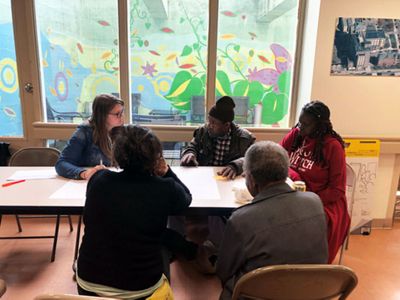
The Belmont neighborhood in Philadelphia faces flooding of their streets and parking lots every time it rains. Homes can also flood, leading to water damage and mold.
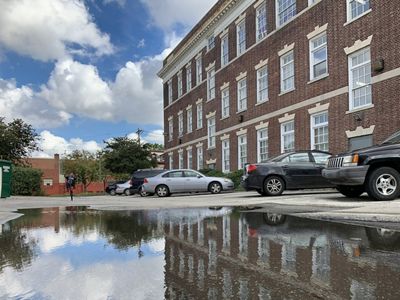
Through partnerships with the community and organizations such as the Friends Rehabilitation Program, TNC is working to bring nature’s solutions to neighborhoods. Not only do gardens help mitigate the effects of stormwater but they also provide benefits to the community such as fresh produce.
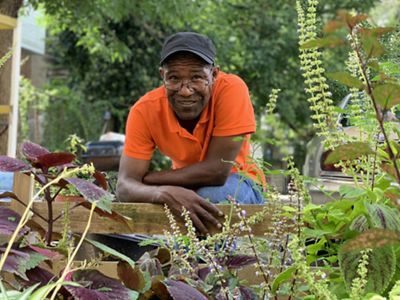
Danyell Brent works with the Friends Rehabilitation Program to create community gardens in his neighborhood of Belmont. These gardens help soak up stormwater that could otherwise wind up on the paved roads and parking lots.
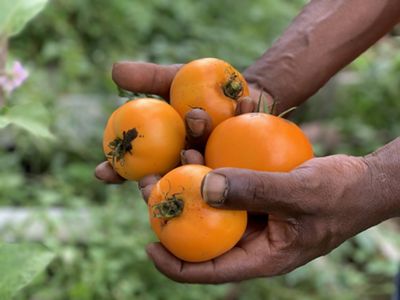
Quote: Rob McDonald
What's exciting about Philadelphia is we are trying to provide a model of how you can do large scale change in a city, create a big piece of green infrastructure to solve a problem, but also prove it benefits the local community.
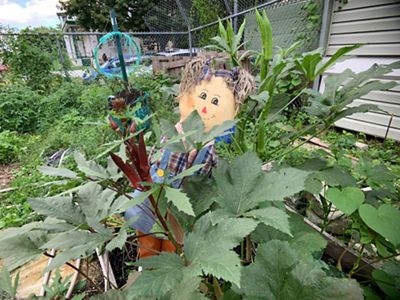
Natural Solutions to Stormwater
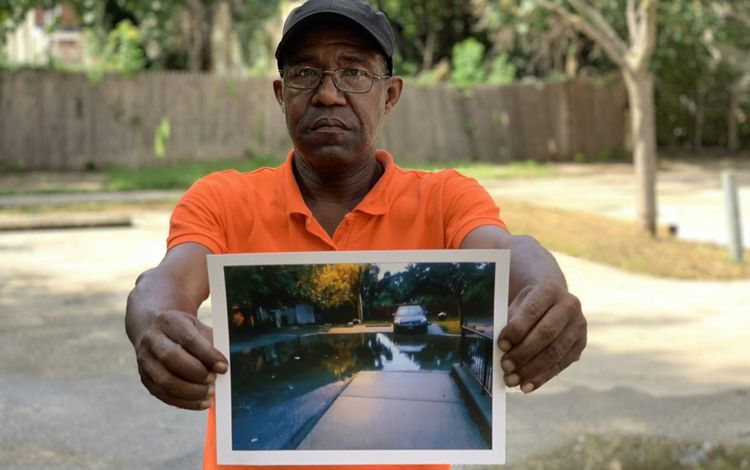
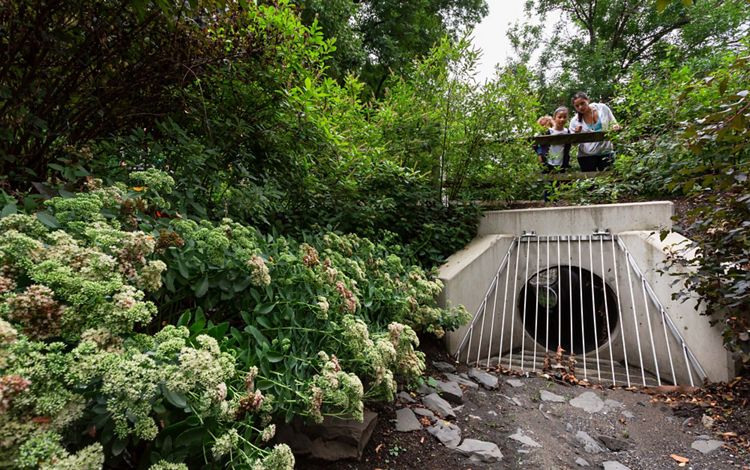


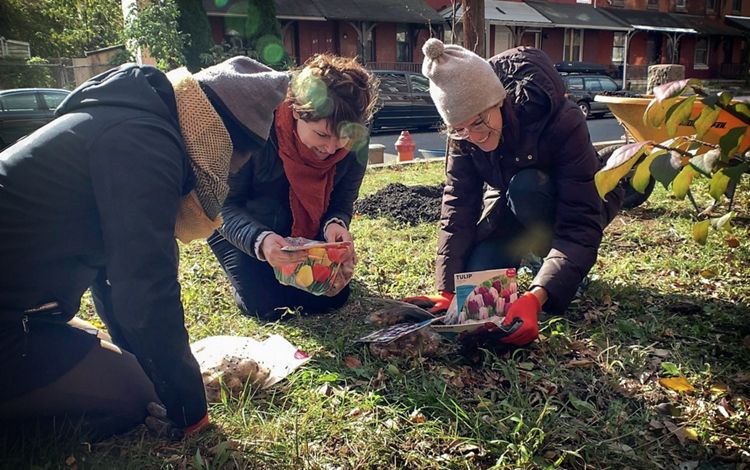
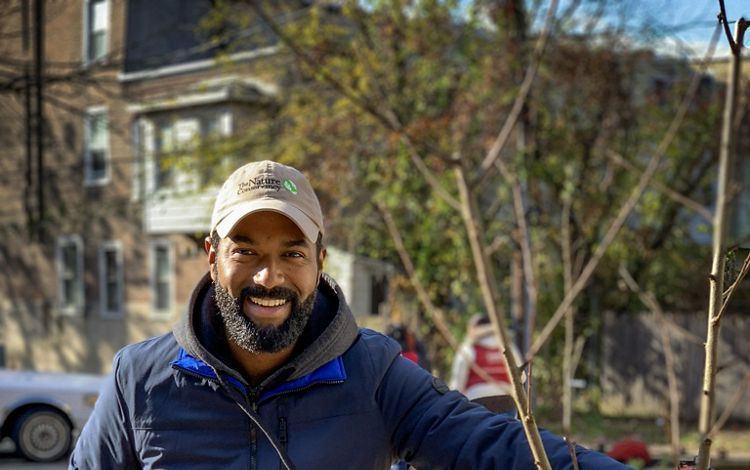
Episode Resources
About Destination Nature
Destination Nature is a new podcast series from The Nature Conservancy that brings conservation stories to your computer. Three pilot episodes launched in the summer of 2019. In each episode we explore a new project, talking with TNC staff and partners about our work in action.
Email our team to share your thoughts about the Destination Nature podcast or to suggest topics for future episodes at destination.nature@tnc.org.